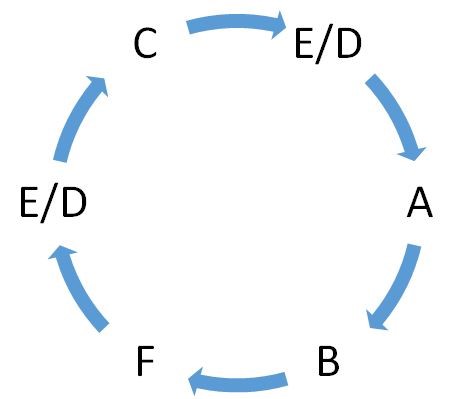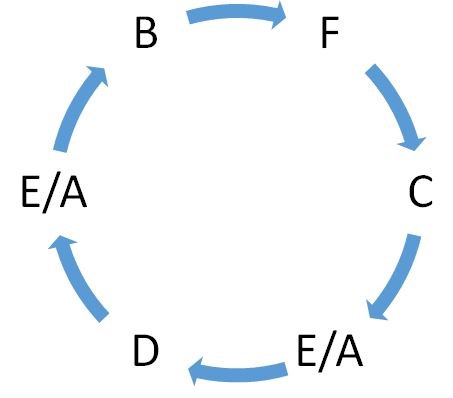Question
A, B, C, D , E and F are sitting around a circular table
facing the center. Who sits in front of C? I.A sits second to the right of F, who is second to the right of C, who is not the neighbour of B. II. B is second to the left of D, who is third of the left of F. C is not the neighbour of D. Each of the questions below consists of a question and two statements numbered I and II given below it. You have to decide whether the data provided in the statements are sufficient to answer the question. Choose your answer from the options based on this.Solution
From I.  Thus B sits in front of C. From II.
Thus B sits in front of C. From II.  Thus either A or E sits in front of C. Hence, only statement I is sufficient to answer the question.
Thus either A or E sits in front of C. Hence, only statement I is sufficient to answer the question.
Choose the Venn diagram which best illustrate the three given classes.
Dog, Animal, Pet.
A tradesman gives 6% discount on the marked price and 1 article free with every 24 articles bought and still gains 25%. If the marked price is 28% more ...
What is the smallest number that should be subtracted from 1798425 so that the resulting number is divisible by 8?
The nine digit number 9x48879y4 is divisible by 88. Find the value of √xy, given that x < 8 and y < 8.
What is the difference between (in m2) the area of a circular field of radius 28 metres and area of a rectangular piece of land having its di...
If '+' means '-' , '-' means 'x' , 'x' means '÷' , '÷' means '+' , then what will be the value of ' 500 x 50 - 20 ÷ 50 + 40 ' = ?
...Find the unit digit of 3323 + 4235
The respective ages of a mother and her daughter are 45 and 9 years. In how many years will the mother be thrice as old as her daughter?
If a sum invested at compound interest of 25% p.a., compounded annually becomes Rs. 18,750 after 2 years, then find the sum invested.
- Simplify the following expression: [{(560 ÷ 40) + √256}% of 4500] ÷ (3 X 5)
Relevant for Exams:



